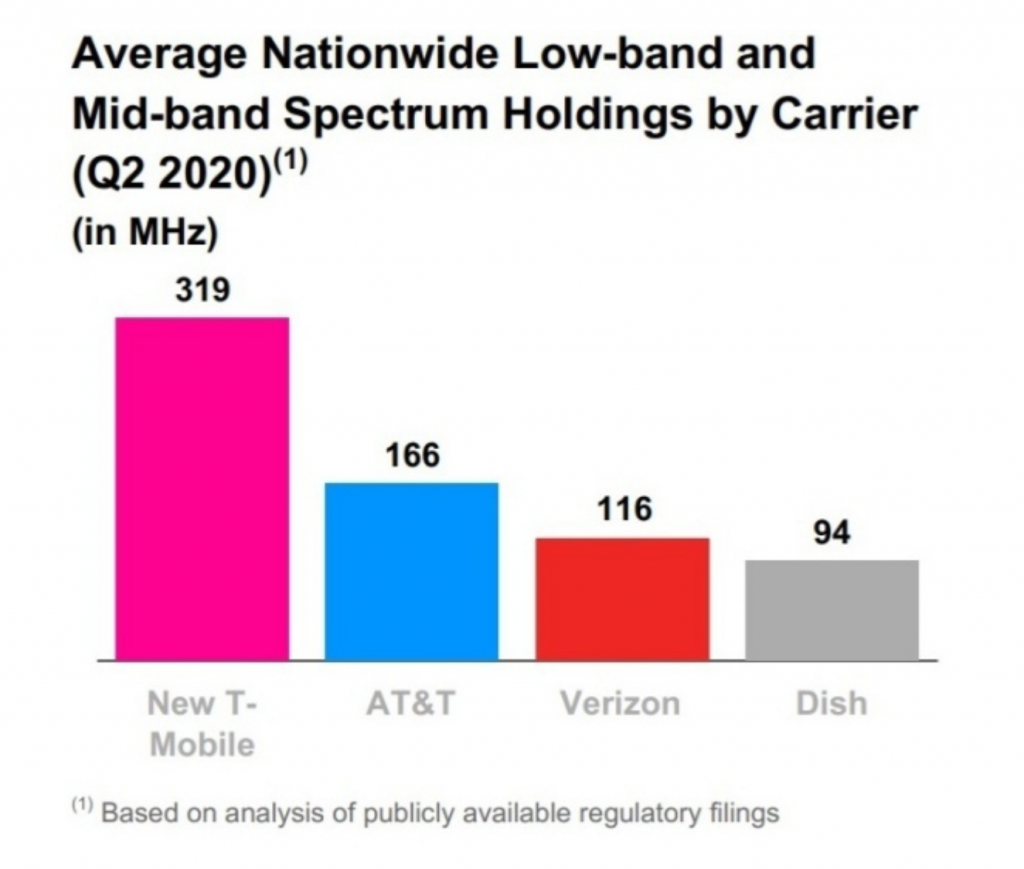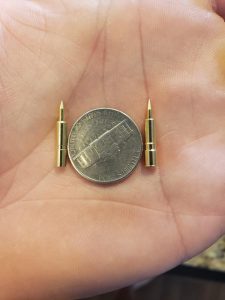Despite all the applications of 5G outside of consumer mobile application, the "big four" wireless carriers will no doubt be the driving force behind 5G in the US.
If you’re not up to date, Dish Network entered the arena as the fourth big wireless competitor after T-Mobile took over Sprint. Combined, they account for 98% of the market share in the wireless space.
They are fighting to be the one to add more frequencies to their networks to enhance 5G capability.
The frequencies needed are one of the major differences between 4G and 5G.
The 4G networks use the 700-2500 MHz range. Using lower frequencies allows the signal to penetrate buildings and increase range. 5G requires a much larger range of frequencies to function optimally.
It needs those same low frequencies for the same reasons. But then it needs high frequencies to support the huge bandwidth that will be needed to support future technologies. And it also needs the midband to allow for a mix of range, latency, and bandwidth.
Unfortunately, the midband range is heavily utilized by the government…until now.
Earlier, the White House announced that the 3450 to 3550 MHz range will be handed off to the FCC to auction off to the private operators. The auction won’t take place until December or early 2022.
Although no one is sure if 100 MHz range will be enough, but it is a start to help American operators catch up with China and South Korea.
Plus, it might be a lifeline to level out the field across the big four, since one has already identified itself as a clear leader.
First Out of the Gate…And Not by A Little
Check out this chart.

From phonearena.com.
T-Mobile (NASDAQ: TMUS) currently has the strongest 5G network among the major carriers both in terms of availability.
T-Mobile holds more capacity than any of the others. And as of last week, it became the first operator in the world to launch a standalone 5G network. Previously its 5G network had been tied to its 4G LTE coverage which limited its capacity.
This move expanded its 5G coverage by 30 percent. Meaning its coverage now spans 1.3 million square miles to more than 250 million people. Plus, it also improved latency by 40%.

Grab a piece of paper and pen to write this down…
Because you’re about to see the name and ticker symbol of the ONLY 5G STOCK every investor should own.
You can get the name and ticker of this company right here, no strings attached. But you better act fast…
Because the Federal Communications Commission, the government agency in charge of 5G, just scheduled a major announcement that would send shares soaring once announced.
Don't miss out. Click Here to Get #1 5G play for 2020 before the next market close.
That’s not all.
T-Mobile also announced that it has surpassed AT&T in total number of customers and is now the #2 wireless provider in the US with 98.3 million total customers.
Second-quarter total revenues increased $17 billion when compared to the same quarter of the previous year. This was due to the Sprint merger and continued customer growth under the T-Mobile brand.
The company has already locked in deals for 6 new Samsung 5G capable devices to be added to its network. This includes the new Galaxy, foldable smartphones and tablets. Combine this with the ability to get 5G in hundreds of small towns in America, and more customers will be switching to T-Mobile.
Investors are already realizing that this early lead is important. Shares are up 47% since the beginning of the year. At the same time, AT&T shares are down 22%, Verizon is down 3% and Dish is down 1% since January.
But Not All 5G Is Equal
As I mentioned above, there are frequencies that will be auctioned off by the FCC. This could help tip the scales if T-Mobile gets out-bid. But there’s no doubt that T-Mobile is set up to stay a frontrunner in this trend.
But T-Mobiles 5G network has been rolled out using low-band. In terms of download speeds, they rank in the middle of the pack.
The best U.S. 5G network is through Verizon Com (NYSE: VZ) that uses high-band frequencies and uses mmWave spectrum. Verizon’s network provides 5G speeds that are 1,100% faster than T-Mobile.
Chicago has become Verizon’s dominant market and I love my Samsung Galaxy S20+ 5G phone on their network.
Like the 5G war between the U.S. and China, T-Mobile has a big lead on the others with their rollout.
If you’re looking for a surefire way to lock in some solid safe modest gains from 5G, T-Mobile is a sure winner.
But if you’re looking to generate some consistent 5G cash, Verizon is a keeper with its 4% dividend.
If you want to know the #1 5G stock to own, you can check out my special presentation here.
To your prosperity,
Joshua M. Belanger
Executive Publisher & Founder